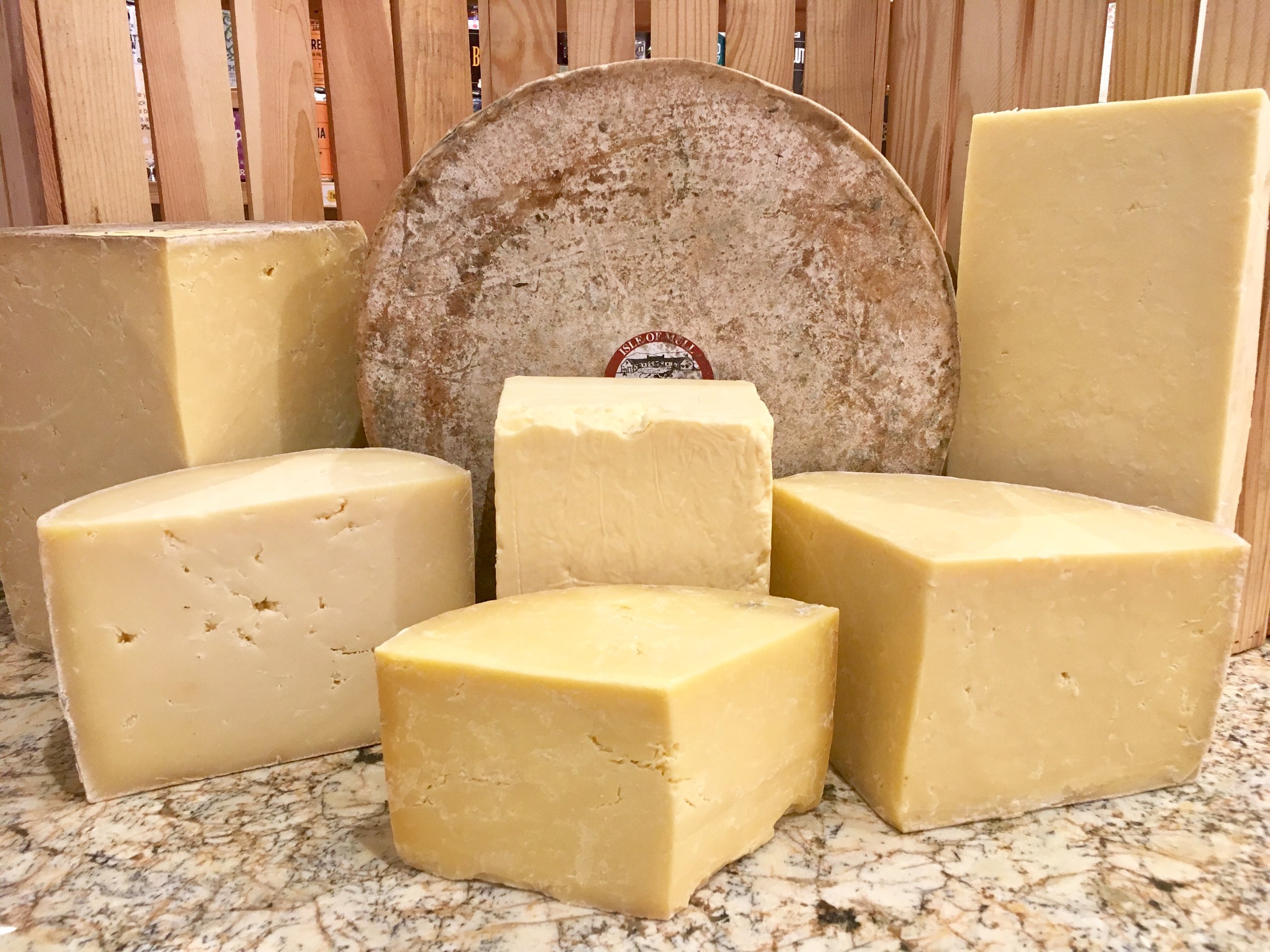All About Cheddar
Cheddar is a contentious and confusing subject in the cheese world. There are entire books written on the subject and “Cheddar” has the longest entry in my fave book, Oxford Companion to Cheese. Why? Well, it’s partly a popularity thing. Lots of people want to eat it and lots of people want to make it, so there are lots of opinions about it. What is the “right” way to make cheddar? Can any cheese be called cheddar? Should it be a protected name? For this newsletter, I however, I want start with the journey of cheddar, from the curd to our cheese case.
Cheddar is made using the cheddaring process, which affects the texture and acidity of the cheese and is what makes cheddar, cheddar! Cheddaring starts after the curds and whey have separated and the whey is drained. The curds are pushed to either side of a large, rectangular vat, creating a channel between the long piles. The curd piles are cut into equal sized blocks usually about eight to ten inches long, and left to drain a little more. This condenses the curds just enough so they stay in the block shape and can be carefully turned over and stacked. The blocks are turned and restacked in a different order about every ten to fifteen minutes.
There are a million and one different tweaks cheesemakers use to affect the flavor of their final cheddar. If cheesemakers want to encourage acidity development, for example, they keep the curds warmer by stacking the curd blocks higher and not turning them as frequently. If the curds are getting too acidic, they do the opposite, turning the curd blocks more often and making shorter stacks to cool down the curd. As I was reading about cheddar, I was reminded at the large number of variables in cheesemaking and how cheesemakers have to combine science with feel and experience. Amazing! The curd blocks are moved around until enough whey has drained, the curds have compressed, and the blocks have the look of cooked chicken breast. I know that’s kind of a weird comparison, but it’s common in the cheddaring world, apparently.
By this point, cheddaring is donezo and the smooth curd blocks are fed through a machine that looks like a chipper, which mills the curd blocks into pieces. All that work to bring the curds together in one cohesive slab and then BOOM! Shredded! However, the milled pieces have a longer, stringier texture that ensures the correct texture in the final product. Salt is added to the milled pieces, which are packed into molds to age for months or years until the cheese tastes just right. If that explanation was insanely confusing, here's a video that walks us step by step through the process.
Now the cheddar, aged, fully solid and delicious is ready for the journey to Salem. If the cheddar is from Europe – Isle of Mull, Westcombe, Hafod, for example – it sails across the Atlantic to an importer. The first landing place is Larkin Cold Storage in NYC. There, the cheddar stands in line for freakin’ ever, passport in hand waiting to be cleared by customs and FDA agents. Ok maybe it doesn’t stand or have a hand or a passport, but the other part is true! Once the cheddar is allowed into the country, it is sent to one of our distributers who then trucks it along to us. If the cheddar is from the US, the cheesemaker sends it to the distributer, and from then on the process is the same for foreign and domestic cheddars. We receive it, open up the box, examine it, cut it open, and taste it to make sure it is shipshape after the trip, wrap it in plastic, and snuggle it into the case. Finally, the best part, we get to feed it to you!
Cheddar has quite a journey from curd to case. It takes a lot of dedication and coordination and time to make and transport just one sharp, sweet, earthy, savory wheel! After all this writing I think I need a snack… I wonder what I’ll have…
For the love of cheese and all that cheddar making,
Kiri




